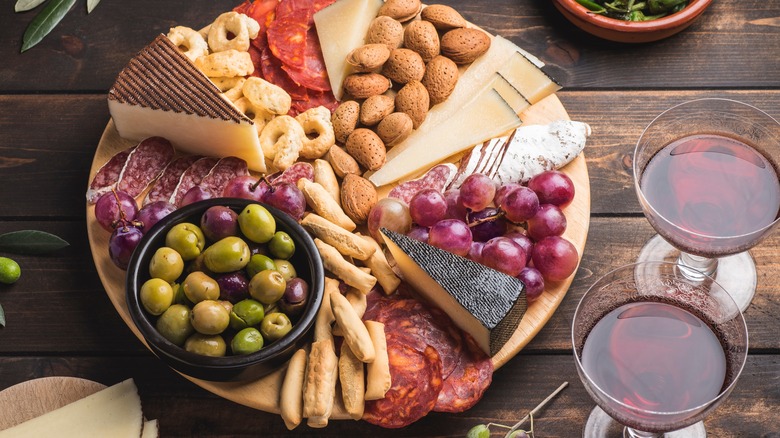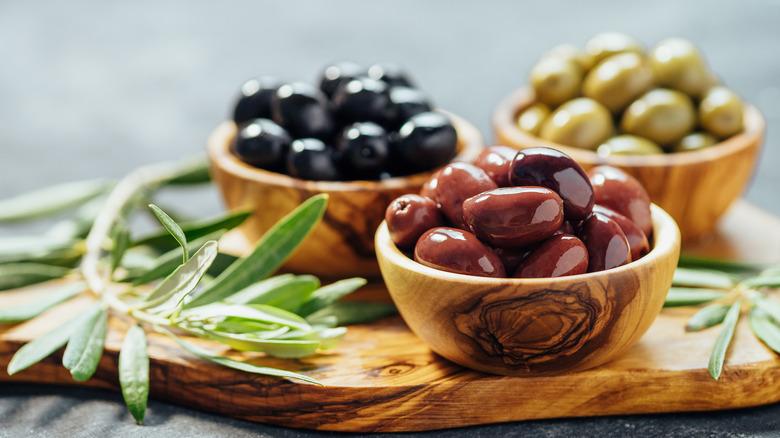Variety Is Key When Pairing Olives With Your Cheese Board
The internet is flooded with cheese board content. From tips for putting together the ultimate cheese board to the importance of having the right tools for your cheese boards, advice on how to curate the perfect spread is everywhere you look. Fruits, crackers, jams, bread, and nuts are usually the focus of building around cheeses, adding sweet and savory components to the board. Along with these, we think you should lean into the many varieties of olives, as they provide a briny contrast to creamy cheeses and sweet jams.
Olives are stone fruits, like peaches and cherries, filled with healthy fats, and contain high levels of vitamin E in addition to other antioxidants. Since raw olives are practically inedible due to their bitterness, they must be cured before we are able to enjoy them. There are more than 130 varieties of olives that are regularly cultivated for human consumption, so it's a shame we see such minimal diversity of olives on our cheese boards. Don't be afraid of whole olives with their pits intact, simply leave a small bowl beside the olives for guests to discard their pits. Pre-pitted olives can lose their shape and have a less-than-desirable texture due to the inner meat of the olive being exposed to the salty brine for long periods of time.
Types of olives and what cheeses to pair them with
Meaty, buttery Castelvetrano olives are mild and pair well with rich, creamy cheeses like Brie as they won't compete with a strong, earthy flavor. Cerignola olives, similar in their mildness, are among the largest olives you'll encounter, which is why we recommend pitting and stuffing them with a bold, funky cheese like Gorgonzola save a few extra blue cheese stuffed olives for your next martini). Mission olives have a grassy yet bright and fruity flavor that reflects their California origins, and go well with cheeses such as a lightly aged Irish cheddar. Any assortment of olives marinated in olive oil with savory herbs or citrus peels complement fresh cheeses like feta or chèvre, which carry a more mild taste and rich texture.
Kalamata olives, a popular black variety from Greece, are more intense, tangy, and savory due to their red wine vinegar preservation, which also gives them their beautiful purple hue. Kalamatas pair nicely with creamy and briny Mediterranean cheeses, like sheep's milk feta and halloumi. Sometimes known as the Spanish olive, Manzanilla olives complement Spanish varities, like the semi-hard, aged Manchego or Idiazabal cheeses, which are slightly salty but also sweet and nutty. With such a wide array of olives to choose from, the possibilities are endless. No matter what olives you place on your cheese board, guests are sure to enjoy choosing their own briny adventure.

